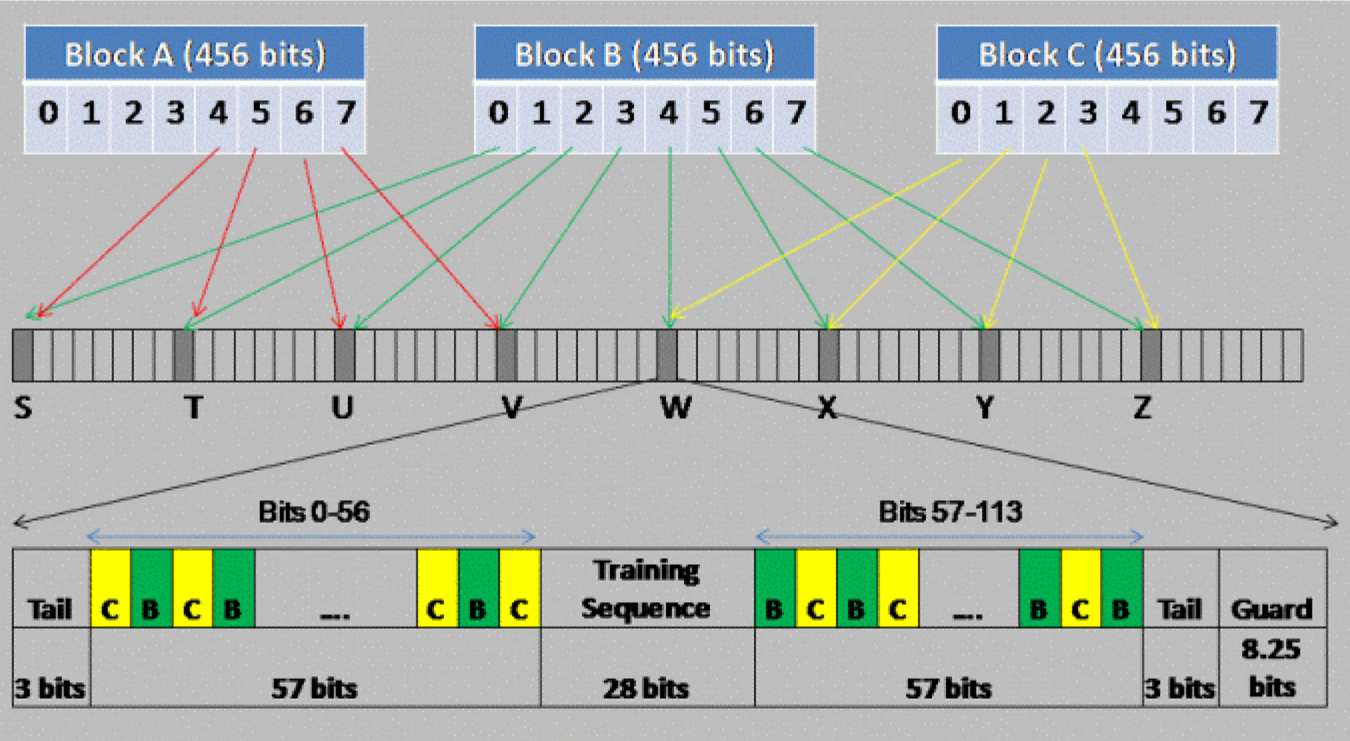Converting Analogue to Digital suitable for the mobile phone network




Good site for details of how GSM works.
When a speaker talks into their mobile phone it is an analogue signal that the phone receives; and the phone transmits the speech again on an analogue radio wave. However, between the input and output, there are a number of complex transformations required to ensure a secure phone call can be mde and received.
Speech to Radio waves is a 6 phase operation. Additionally, the receiver must reverse this process. Making a phone call is different in nature to sending data. in the case of sending data, error correction can take place by requesting a retransmission of the data; this cannot happen within a phone call and the receiver must do it's bets with what it receives.
- Convert the analogue input to digital and compress. A to D
- Add some error protection, to allow the receiver to correct some frequent errors
- Interleave the blocks
- Encrypt the data. Encryption
- Multiplex the transmissions. Multiplexing
- Modulate the transmission. Modulation
INPUT SPEECH
OUTPUT RADIO WAVES
Error protectionThe data, once compressed is in blocks of 260bits. Errors can occur during transmission and in this environment it is not possible to re-transmit blocks containing errors. The technique used to allow for error detection and correction is to add extra bits to the block. The technique is called redundancy check and convolution. in this case, the block size will increase from 260 bits to 456bits giving a rate increasing from 13kpbs to 20.8kbps. But doing this the most frequent errors can be checked and corrected
InterleavingOne common form or error is burst errors, small sections of the transmission are lost. To compensate for this a technique called interleaving is used. The 456 bits are split into 57 8bit blocks. Each block is distributed over 2 output blocks giving the transmission some extra protection at no extra cost.
Current 4G and 5G phone networks support HD phone connections. This works in the same way as described above, except that the sampling of the analogue signal in the first step is doubled, thus providing a larger amount of data to be processed. These faster networks are able to work with this higher level of data and the resultant phone calls are clearer for ths users.
*u* ©mobilephonetechnology.co.uk all rights reserved 2017- 2025



